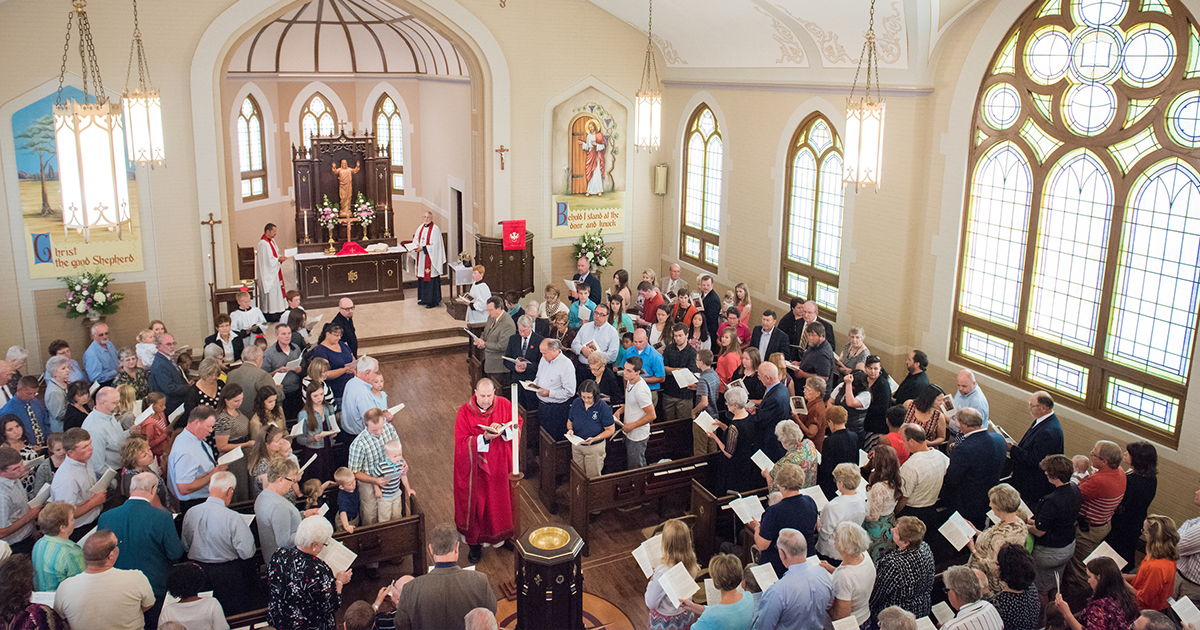
By Cheryl Magness
At its Sept. 13–15 meeting at the LCMS International Center in St. Louis, the LCMS Commission on Theology and Church Relations (CTCR) adopted two new documents:
- A report on the doctrine of the priesthood of all believers.
- A Bible study designed to be used with the 2012 CTCR report, “Immigrants Among Us.”
‘The Royal Priesthood: Identity and Mission’
In 2007, the LCMS convention adopted Res. 1–03, which reaffirmed the Synod’s commitment to the doctrine of the priesthood of all believers and directed the CTCR to prepare a “comprehensive study document which clearly presents the biblical teaching of the royal priesthood and Luther’s teaching on vocation in the light of the mission challenges of today.”
Bible study
President’s Recommendation & CTCR Report
In 2016, the Synod in convention adopted Res. 5–13, encouraging the CTCR to complete its study, and Res. 13–01A, which stressed that all Christians have “been blessed with spiritual gifts” and strongly affirmed the “blessed complementary relationship between the royal priesthood and the Office of the Public Ministry.”
The CTCR has now completed its work on this topic with the adoption of the report, The Royal Priesthood: Identity and Mission.
In a November letter commending the new report for reading and study, LCMS President Rev. Dr. Matthew C. Harrison notes the tendency of the church to be “plagued by apparent but false dichotomies,” saying that “perhaps no teaching of the Bible has been so abused this way as the doctrine of the royal priesthood.”
Harrison says the new CTCR document “points the church in the right direction. We highly regard, recognize and extol the rights and privileges of the priesthood.
“At the same time, we treasure the office of pastor, which has its unique biblical responsibilities. Together, we share Christ with those who need Him.”
President’s Recommendation Letter with CTCR ReportThe report is divided into six parts: Introduction, Old Testament Background, ‘Priest’ in the New Testament, Priesthood in the Early and Medieval Church, Luther’s Reformation, and Conclusion.
The Introduction emphasizes that “the royal priesthood and the Office of Public Ministry are not in conflict with each other.” It holds up “the hope and prayer of the Commission that this study will be a useful tool for individuals and congregations toward the goal of reaffirming the royal priesthood of all Christians and be an encouragement for every Christian to proclaim ‘the excellencies of him who called [us] out of darkness into his marvelous light’ (1 Peter 2:9b) according to one’s callings.”
Part I of the report considers the meanings of the words “priest” and “priesthood,” noting that “Peter’s reference to God’s sons and daughters as ‘a royal priesthood’ (1 Peter 2:9) rests on a rich background with deep roots in God’s dealing with His Old Testament people.”
Part II focuses on the New Testament, showing how “all priesthood is made clear only in Christ Jesus, the great High Priest, and His work” and how all the members of the royal priesthood are called in Baptism to lives of priestly service in Christ in their daily lives. Yet the report notes that this does not negate the Office of Public Ministry, for not all can or should exercise the office of public teaching and sacramental administration.
Parts III and IV consider how the terms “priest” and “priesthood” were understood from the time of the Early Church through the Reformation.
The report’s Conclusion summarizes its study in seven findings emphasizing that the royal priesthood is the whole Church, those reborn in Baptism, and its identity is found only in the Great High Priest who provides atonement, forgiveness and new life as His priestly intermediaries between God and humanity. Graciously redeemed in Christ, royal priests are called to offer themselves, as living sacrifices, to prayer and intercession, and to making known “the excellencies of God in Christ.”
The concluding summary also stresses that the setting for the exercise of the functions of the royal priesthood is in the daily vocations of believers — at home, at work, in society — and that the “the royal priesthood does not undermine or negate the Office of the Public Ministry which Christ gives to the church.”
“All too often, unfortunately, the royal priesthood and the office of the public ministry are seen as being in tension, even conflict, with each other,” said CTCR Executive Director Rev. Dr. Joel Lehenbauer. “We truly do hope and pray that this new report will help to remind all of us that ‘there exists a blessed partnership in the ministry of the Gospel between the royal priesthood and those called to the Office of the Public Ministry’ [2016 Res. 13-01A] — all for the sake of God’s own vital and urgent mission of rescue and salvation in Christ alone.”
‘Immigrants Among Us’ Bible study
Also at its September meeting, the CTCR approved a study guide for use with its 2012 report, Immigrants Among Us: A Lutheran Framework for Addressing Immigration Issues.
Both the Bible study and the new report will be made available for free download on the CTCR’s website at lcms.org/ctcr.
Published Nov. 19, 2018